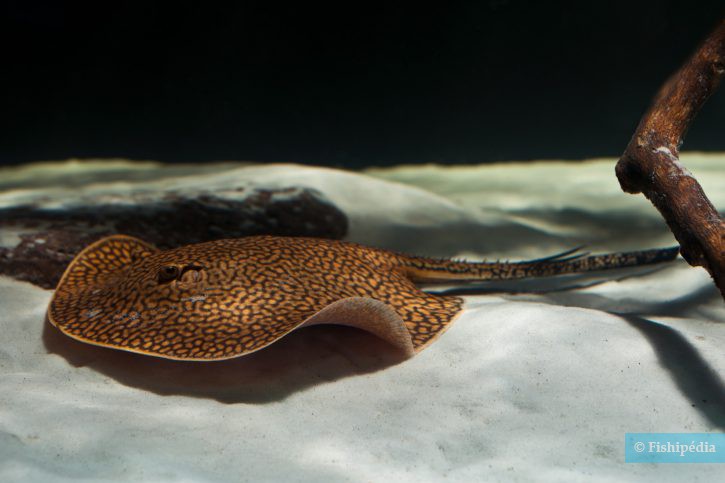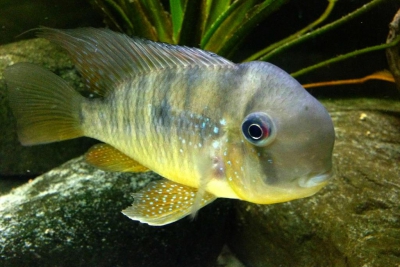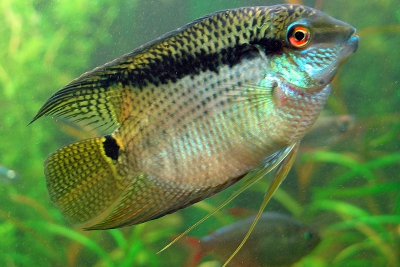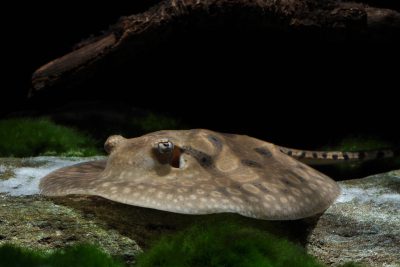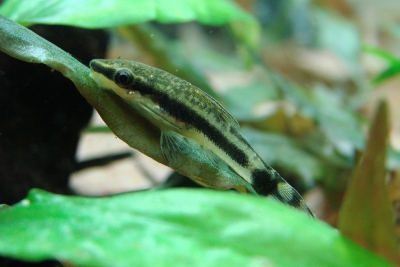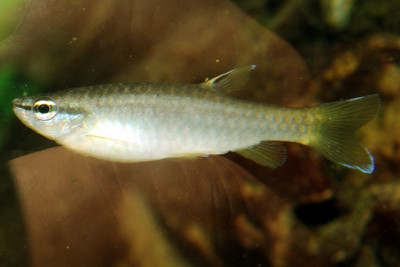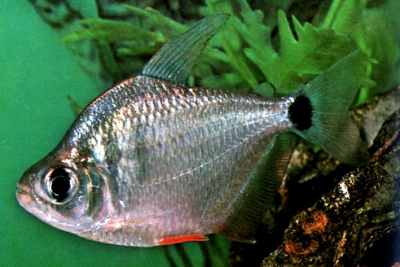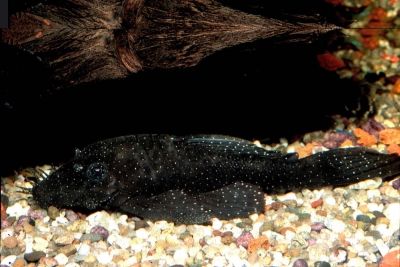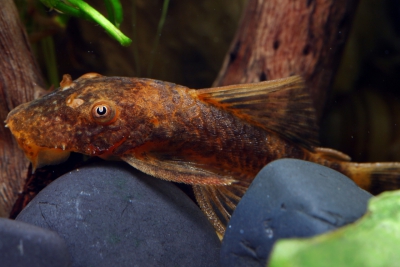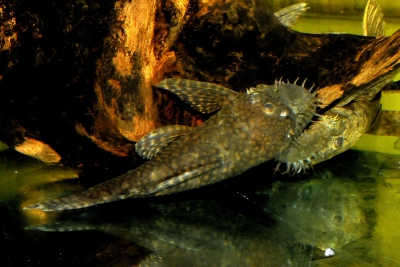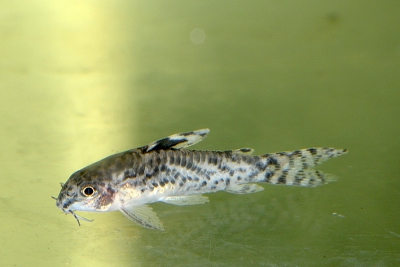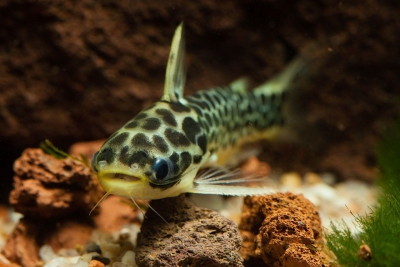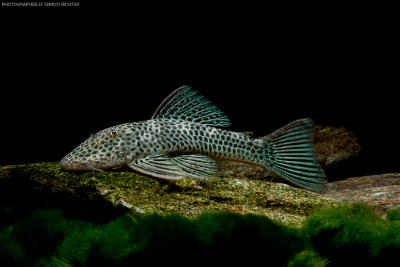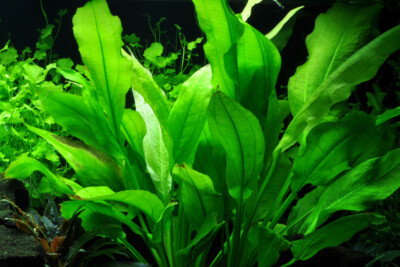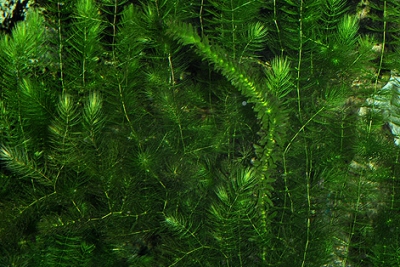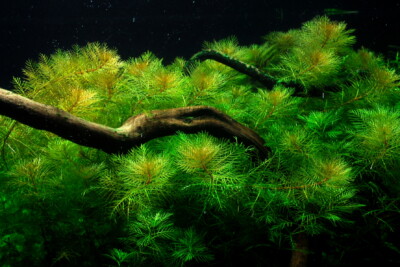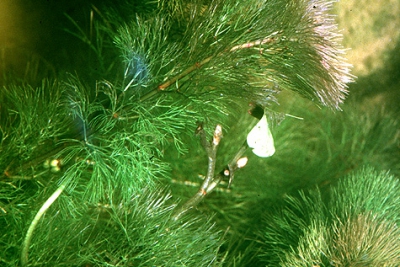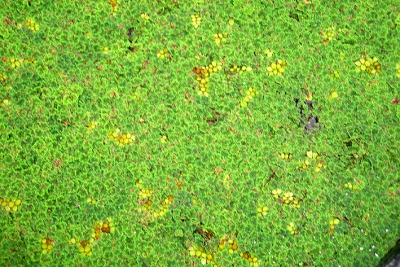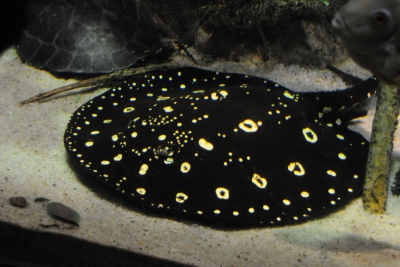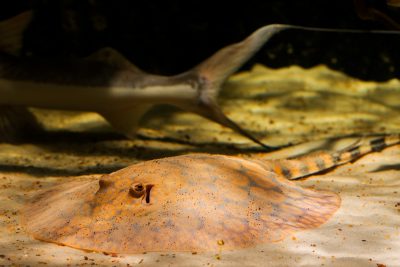reticulated freshwater stingray
| Family | Potamotrygonidae |
|---|---|
| Genus | Potamotrygon |
| IUCN category (World) | DD |
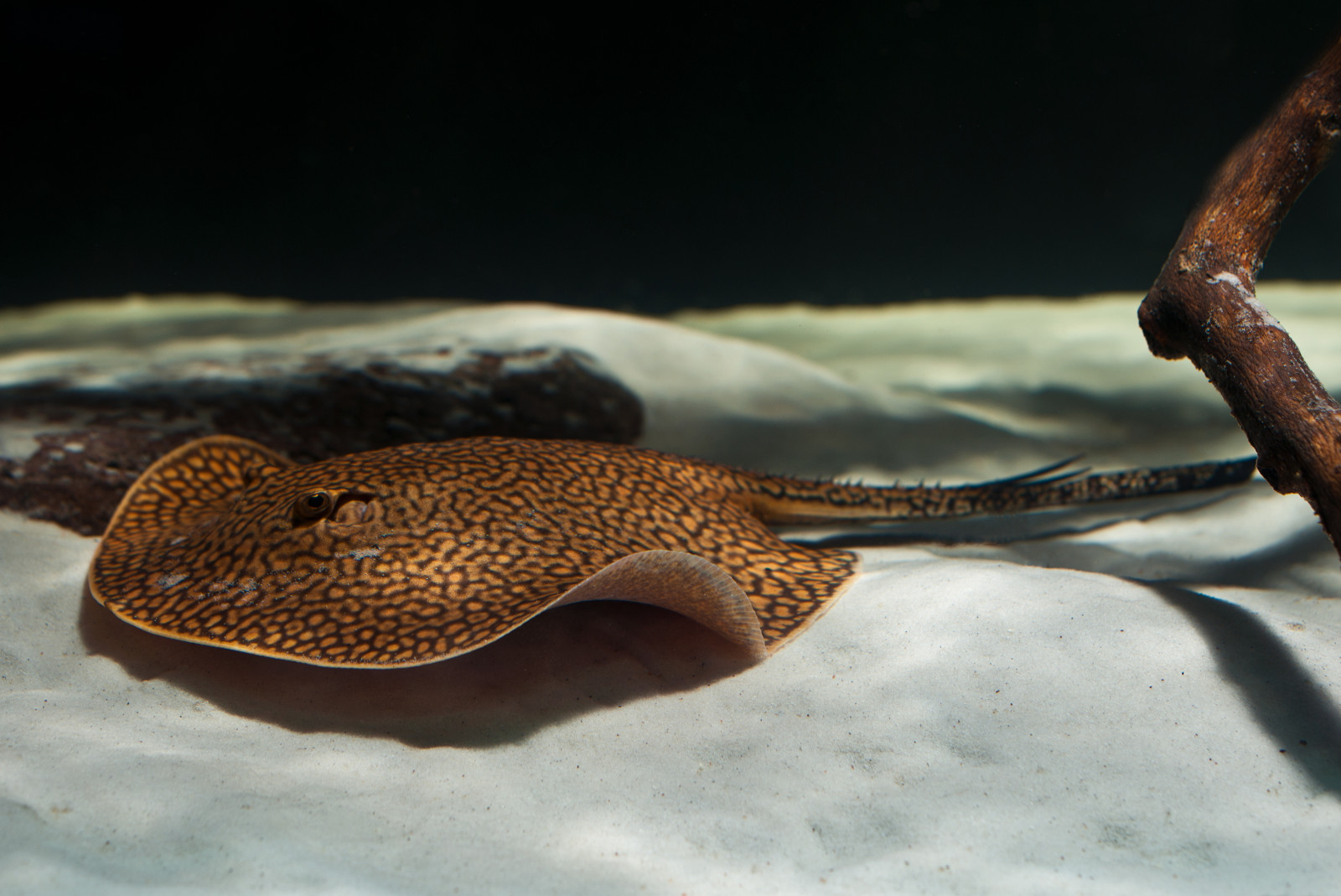

Introduction
Potamotrygon falkneri, commonly known as reticulated freshwater stingray, is a fresh water fish from the Amérique du Sud.
This sheet is currently being prepared. The texts currently proposed come from our data model or are being drafted. To request priority for this content, you can write to us HERE.
Who is it?
Morphology
-
Type
-
Average size50 cm
-
Maximum size60 cm
-
Longevity15 year
-
ShapeCircular
-
Patterncircle pattern
-
Type
-
Average size50 cm
-
Maximum size60 cm
-
Longevity15 year
-
ShapeCircular
-
Patterncircle pattern
How to recognize This fish ?
The reticulated freshwater stingray measures between 50 and 60 cm. This fish is bicolore with a predominantly argent and noir body. The also has beige circle pattern.
Behaviour & Life cycle
-
dietcarnivorous
-
Sociabilitysolitary
-
territorialNo
-
Way of livingnocturnal
The reticulated freshwater stingray hunts in the stalk and is one of the predators of its biotope. Opportunistic, it does not hesitate to attack any smaller animal nearby.
The reticulated freshwater stingray is a fish solitary naturally found on the bottom. This species is carnivorous . This fish lives mainly at night. Usually, it leaves its hiding place and starts to be active once it gets dark.
n general, outside of the hunting season, this species does not care much about other animals crossing its path.
Reproduction
Risks for humans
-
VenomousYes
This species is venomous and can cause serious injuries when touched.
What to do in the event of a sting?
in case of sting, the following rules should be followed, in this order:
- Isolate the victim from the danger and quickly remove him or her from the water
- Call for help
- Lay the victim down in a half-sitting position and avoid any effort
- Immobilize the affected limb
- Clean the wound
- The venom of this species being thermolabile, it can be neutralized if it is submitted to a temperature of about 45 °C. It is therefore possible to heat the wound. This popular technique should be practiced with great care so as not to aggravate the wound by burning it. It is advisable to immerse the affected limb in hot water.
- If the puncture is too deep, heating the wound will be less effective.
Sometimes the sting can cause discomfort or even loss of consciousness in the victim. The stings are usually very painful.
Origin and distribution
What is its habitat?
Natural environment characteristics
-
Temperature22 - 28 °C
-
pH (acidity)6.5 - 7.5
-
gh (hardness)2 - 10
-
FlowMedium and Slow
Biotope presentation
Species of the same biotope
Main recommendations for fishkeeping
Deontology
In order to preserve wildlife, if you acquire this animal, it must not be released into the wild. See also, the Fishipedia charter.
Fishipedia supports the practice of responsible and environmentally friendly aquarium keeping. We encourage maintenance if it is motivated by a desire to understand the biological functioning of living things and if it is done with respect for animal life.
We believe that aquaristics is an opening to the discovery of aquatic environments, especially freshwater, and that this knowledge is necessary to better protect and respect these environments. Logically, we refute the compulsive purchase of animals that would not find a sufficient and / or adapted place in the host aquarium.
Our recommendations
-
Min volume700 liters
-
Population min1
-
Temperature22 - 28 °C
-
pH (acidity)6.5 - 7.5
Characteristics
-
Difficulty breedingmoderate
-
Robustnesstolerant
-
Behaviourpeaceful
-
Availabilityrare
General reminders
It is strongly advised to read the complete dedicated file and to get information on the feedbacks of maintenance of the envisaged animal, this to avoid any potential conflict whose end result is generally the death of the individual (or the other inhabitants). It is important not to overload your aquarium to limit pollution. This will make maintenance easier.
In nature, animals are subject to weather conditions and live in waters with variable characteristics. The recommendations offered by our team for aquarium maintenance are a guidance and cannot be assimilated to scientific datas.
Beware, as this species is potentially dangerous to humans, it requires for its maintenance the obtaining of a "certificate of capacity of breeding". For professionals, it is necessary to have a "certificate of presentation to the public".
General reminder on maintenance datas
Le démarrage d'un aquarium est une partie primordiale pour l'équilibre et le bien-être des poissons. Lorsque l'on met en eau un aquarium, l'eau passe naturellement par un cycle biologique : le cycle de l'azote. Celui-ci dure environ trois semaines. Tous les 2 jours, nous vous conseillons de tester votre eau jusqu'à ce que le taux de nitrite soit à zéro pendant plusieurs jours d'affilée.
Pour accélérer ce cycle, vous pouvez utiliser un activateur de bactéries comme JBL Denitrol. Cette solution riche en bactéries vivantes et enzymes permet une mise en place rapide du cycle de l'azote. Les poissons peuvent alors être introduits plus rapidement.
Il est important de tester l'eau de son aquarium régulièrement pour maintenir un environnement sain pour les poissons et les autres habitants. Les tests d'eau permettent de mesurer les niveaux de différents paramètres tels que le pH, la dureté totale, ainsi que les taux de nitrates, de nitrites et d'ammoniaque.
Pour réaliser ces tests, vous pouvez utiliser des produits d'analyse spécialisés tels que JBL ProScan qui permet de réaliser un diagnostic de l'eau directement via un smartphone. Il existe également des coffrets de tests plus classiques de bandelettes, comme JBL PROAQUATEST.
En cas d’usage de l’eau du robinet, vous pouvez utiliser un conditionneur d’eau de type Biotopol de JBL pour éliminer les substances nocives comme le chlore, le cuivre, le plomb et le zinc. Une eau trop dure ou trop calcaire peut être inadaptée à de nombreuses espèces tropicales d’eau douce. Si nécessaire, vous pouvez la couper avec de l’eau osmosée ou de pluie filtrée afin d’obtenir une dureté plus adaptée aux besoins de vos poissons et de vos plantes. Les conditionneurs d'eau garantissent une meilleure santé aux poissons et une meilleure croissance des plantes.
Chlorine and chloramine are dangerous for the health of animals. Used to disinfect water, these agents are present in significant quantities in tap water. We recommend using an anti-chlorine agent every time you change the water. In addition to chlorine, treatments and medicines sold for aquarium use sometimes contain dangerous heavy metals in high doses.
Specific needs for the reticulated freshwater stingray
The reticulated freshwater stingray is a species which lives naturally at a temperature between 22 °C and 28 °C. Nitrate levels should remain below 50mg/L. To keep the water clean and unpolluted, plan on changing 20% to 30% of the water volume each month.
The breeding of this species is accessible on condition of being well informed about its needs in aquarium . Any cohabitants must be chosen with care to avoid the loss of animals.
This species is very rare in the aquarium trade. Instead, it is maintained by knowledgeable aquarists who own and breed individuals from wild origin strains. If you want to get this species, we advise you to contact specialized clubs. }Specimens from long time breeding are a bit easier to breed but you have to respect the particular water parameters.
Cohabitation & Environment
This fish being a predatory species, it is recommended to maintain it in a specific environment, without other species. Indeed, any crustacean or fish of lower size will become a potential prey. A 700 liter aquarium is the minimum recommended for its maintenance. If you still try to associate it with other species, the cohabitants must be of a size at least comparable to the predator in a much larger volume. The aquarium can be provided with many hiding places and a large space to allow each individual to find refuge if necessary.
Tips for feeding
The reticulated freshwater stingray is carnivorous.
Feed animals in moderation to maintain good water quality. Meals should be eaten within 2–3 minutes, served in several small portions rather than a single large ration.
Uneaten food quickly decomposes, releasing ammonia, nitrites, and nitrates, which disturb the aquarium’s biological balance.
Make sure each species can access food properly, slower or bottom-dwelling individuals may require targeted feeding.Food recommendations from our partner JBL - Products PRONOVO
-
Granules
-
Flakes
Reproduction protocol
-
Maintenance difficultyeasy
-
egg-laying protectionNo
Hybridization risks
In general, it is advised not to mix several species of the same genus or different varieties of the same species, to avoid the risks of hybridization.
These animals might interest you
These plants might interest you
Plants play a crucial role in aquariums, both for their ability to filter water by absorbing excess nutrients and for their aesthetic contribution. They provide fish with natural hiding places, can serve as breeding sites, and generally help maintain the overall balance and optimal conditions of the aquarium. The selection presented here includes species from the same regions as the species described on this page, although they do not necessarily come from its exact natural biotope.
To go further
Sources & Contributions
Participation & Validation
The Fishipedia team and specialist contributors are committed to providing high-quality content. However, although the information comes from scientific sources or testimonials from specialists, the cards may contain inaccuracies.

Robert Allgayer
Translation
Translation done with the valuable contribution of our translators, who make this information available to a wider audience. We sincerely thank them for their commitment.
In collaboration with : Fédération Française Aquariophilie
Bibliographic references
- - GBIF
- - A taxonomic and morphological redescription of Potamotrygon falkneri Castex & Maciel, 1963 (Chondrichthyes: Myliobatiformes: Potamotrygonidae) - João Paulo Capretz Batista da Silva - MARCELO R. DE CARVALHO - Neotropical Ichthyology - 2011.
- - Potamotrygon marquesi, a new species of neotropical freshwater stingray (Potamotrygonidae) from the Brazilian Amazon Basin - João Paulo Capretz Batista da Silva - Thiago Silva Loboda - journal of fish biology - 2019.
- - XV. RAYAS DE AGUA DULCE (POTAMOTRYGONIDAE) DE SURAMÉRICA Parte II Colombia, Brasil, Perú, Bolivia, Paraguay, Uruguay y Argentina - Carlos A. Lasso - Ricardo de Souza Rosa - Mónica A. Morales-Betancourt - MARCELO R. DE CARVALHO - Domingos Garrone-Neto - Instituto de Investigación de Recursos Biológicos Alexander von Humboldt - 2016.
Scientific partners
Same genus
Species of the same biotope
